THE MAIN SIGHTS IN MONTPELLIER
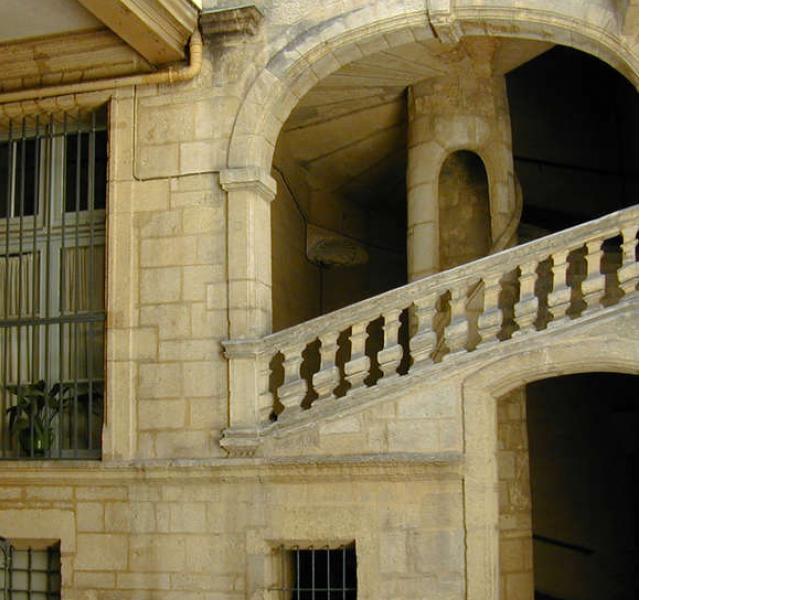
At the very heart of the city, the Place de la Comédie is THE place to be in Montpellier. Formerly known as Egg Place because of its oval shape, it is one of the largest pedestrian areas in Europe, overlooked by the Comédie opera house. At its Centre, the "3 graces" statue-fountain created in 1773, has pride of place. The perfect place to watch as the city comes to life.
Visit the Montpellier Méditerranée Métropole's Fabre Museum.
Considered one of the best museums of fine art in Europe, the Montpellier Méditerranée Métropole's Fabre Museum is an exceptional meld of ancient and modern architecture. It houses European works from the Renaissance to the present day, and includes one wing entirely dedicated to contemporary artist, Pierre Soulages. The town's must-see Museum.
Montpellier contains many little, medieval streets, a throwback to its proud past. Rue de la Valfère, Rue du Bras de Fer, Rue de l'Argenterie, all take you back to a lost era, guaranteed to transport you to another world ... Our tip on how best to enjoy them? Forget the street map and simply wander through the narrow streets. Included in the schedule: browsing the little shops with their vaulted ceilings, where you will discover artisans, antique shops and tearooms; a touch of culture with a tour of St Anne's church, the St Ravy Gallery, etc... it's like travelling back in time!
Get a glimpse of the courtyards of private mansions
Massive doors, large, well-lit courtyards, stairways with wrought iron railings, Montpellier boasts nearly 80 mansions built during the classical period. Veritable hidden gems, these mansion courtyards can only be viewed today under the auspices of the Tourist Office, through guided visits... All the same, keep your eyes open! It quite often happens that, as you turn a corner, you come across one of these doors standing open for a few precious moments. And so your stroll through town can throw up unexpected surprises...
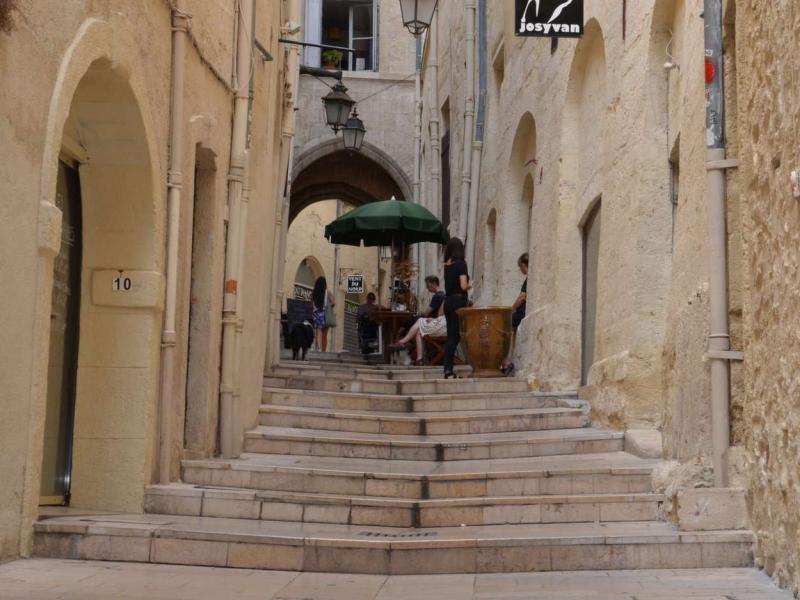
DON’T MISS OUT ON THE SIGHTS OF MONTPELLIER!
But Montpellier has even more to offer. A well-conserved territory, boasting a varied landscape, including the coast only 11 km away, vineyards and mountainous terrain. A gentle lifestyle, typically Mediterranean. Gastronomy and sun-soaked wines. High-level cultural and sporting events ...
SOME MUST-SEE SIGHTS
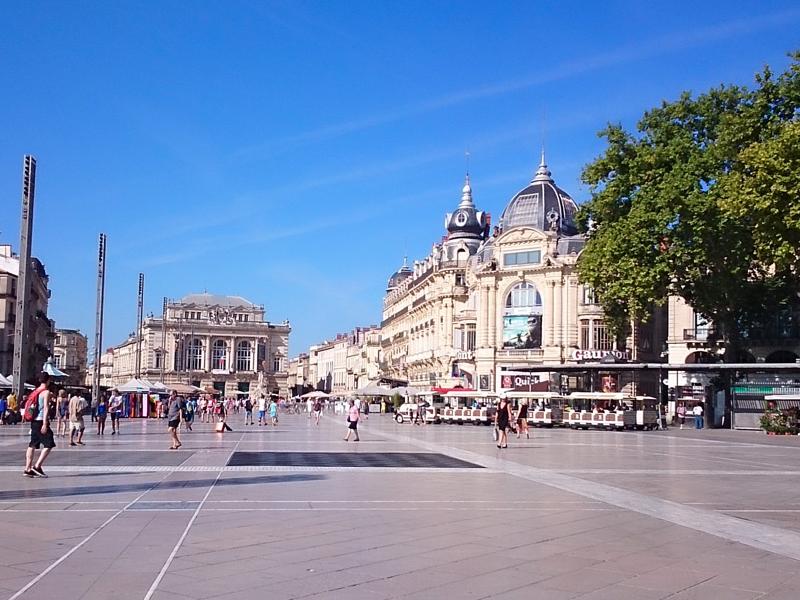
La Place de la Comédie is an essential element of any visit to Montpellier! Also known as Place de l'Oeuf (Egg Place) because of its oval shape, it is one of the largest pedestrian areas in Europe, dominated by the Comédie opera house.
There you will find the Fountain of the Three Graces, a symbol of Montpellier, as well as street artists and hosts of visitors sitting outside cafés and restaurants, enjoying the sunshine and watching the world go by.
Admire the architecture of the 19th century buildings bordering the square. Remember the Gaumont film, "Death Diver"?
At night, the Place is illuminated in beautiful colours.
Place de la Comédie is the starting point for a tour of the historic centre, for lovers of both shopping and history!
Saint-Pierre Cathedral
Designated as a cathedral in 1536 when the Archbishopric of Maguelone was transferred to Montpellier, St Peter's was originally the chapel of the Benedictine monastery of St. Benedict.
Don’t miss: the porch, an impressive canopy supported by huge circular columns, 4.55 m in diameter, which once bore the coat of arms of Urban V, who studied and taught in Montpellier, becoming a Bishop before being elected Pope in Avignon (1362) .
A typical example of southern Gothic, it is the only medieval church in central Montpellier to have survived the religious wars.
Inside, a major work by Sébastien Bourdon teaches you about artistic life in Montpellier in the 17th century.
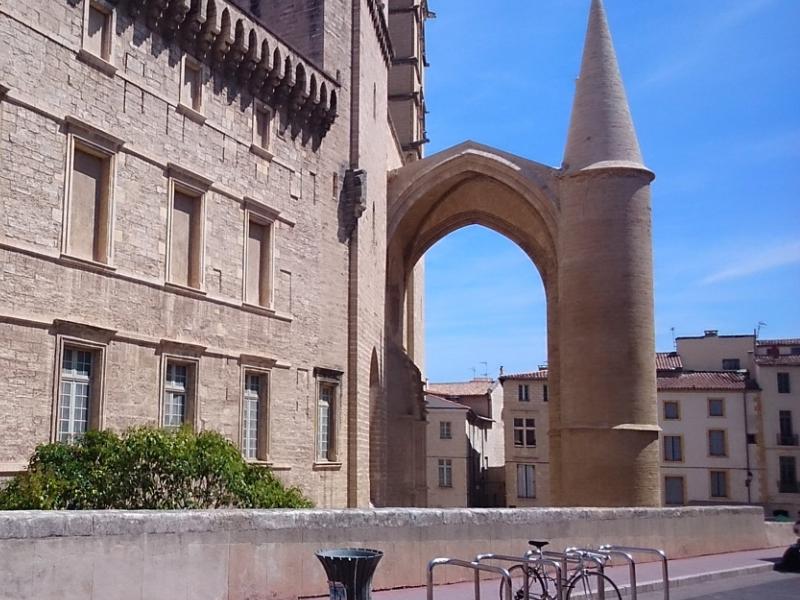
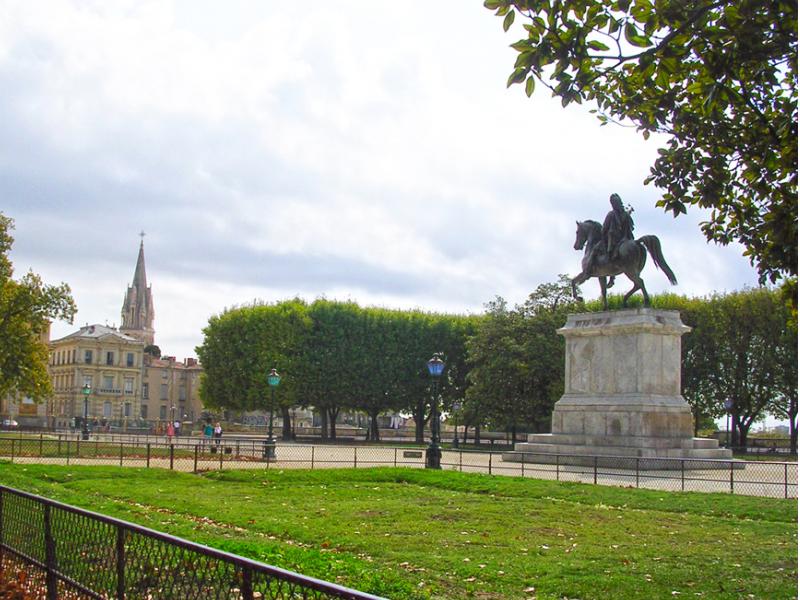
La Promenade du Peyrou and the Arc de Triomphe
Place Royale, the Peyrou Promenade, a belvedere open on all sides, hosts an equestrian statue of Louis XIV, created by architect Jean Giral in 1774. It is also graced by the 18th century Chateau d'eau.
The square, located on the outskirts of the Ecusson quarter, is a favourite haunt for locals in Montpellier. The Arc de triomphe and the Chateau d'eau leading off the aqueduct are typical examples of classical architecture.
Every Sunday morning, the Peyrou Park hosts a flea market.

